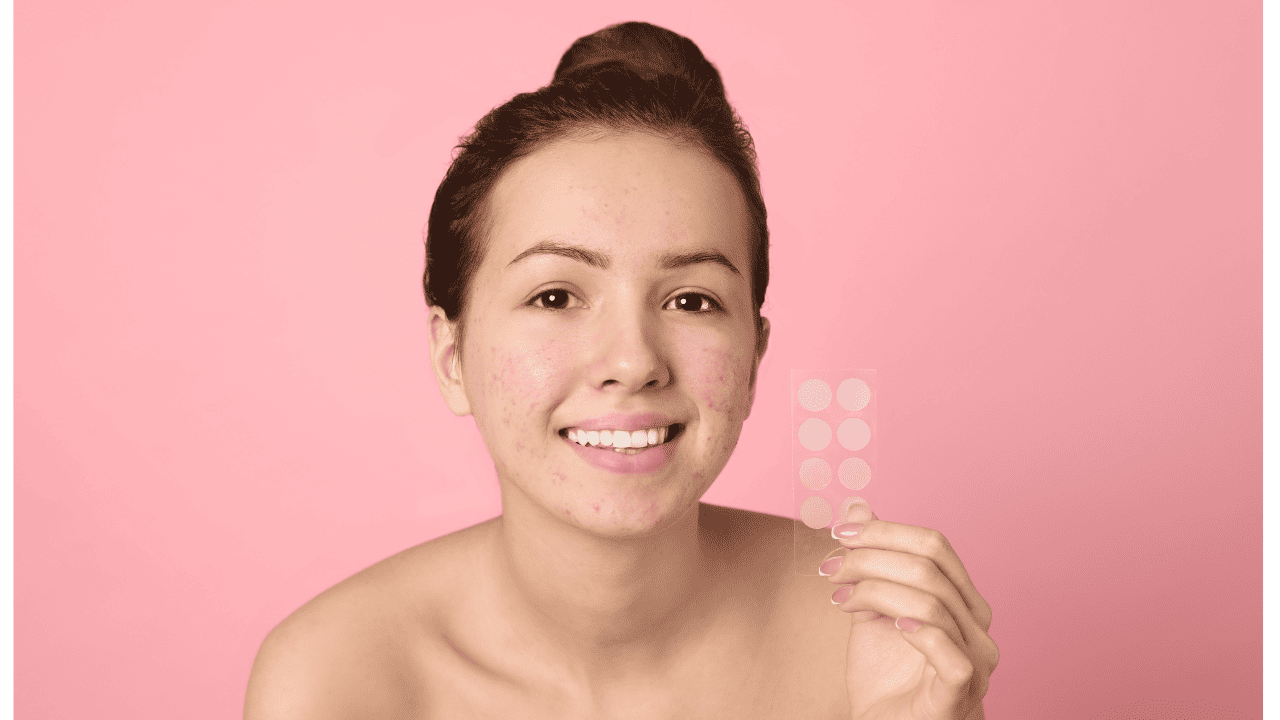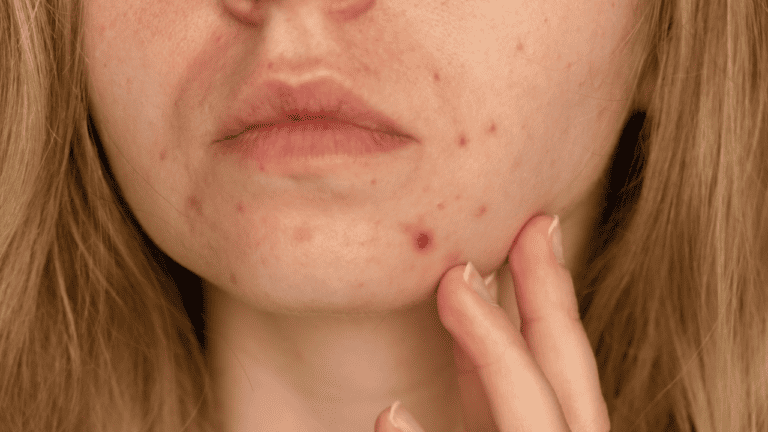Pimple patches are amazing at absorbing excess oil and pus from pimples but have to make sure we’re using them safely as when placed in certain areas of the face, they could potentially cause irritation and redness.
One area to avoid applying a pimple patch is around the eyes because our skin around the eyes is thinner and more delicate than other areas of the face. This makes it more susceptible to irritation and having an irritated eye is definitely not a good thing. Applying a pimple patch to this area can cause redness, itching, and even swelling. It is best to avoid this area altogether when using pimple patches. Let’s talk about it further in this article.
Key Takeaways
- Pimple patches are a useful tool in treating acne, but it is important to know where they should not be applied.
- Avoid applying pimple patches around the eyes, as the skin in this area is thinner and more delicate.
- Do not apply pimple patches to open wounds or broken skin that has not been disinfected to avoid infection.
Understanding Pimple Patches
Pimple patches, either hydrocolloid patches or acne treatment patches are amazing at speed up the healing process of our spots by creating a moist environment.
Types of Pimple Patches
There are several types of pimple patches available on the market. The most common type is the hydrocolloid patch, which is made from a gel-like material that absorbs excess oil and pus from the pimple.
Another type of pimple patch works to treat the acne or pimple and it often contains salicylic acid, which is a common ingredient in acne-fighting products. Salicylic acid works by exfoliating the skin and unclogging pores, which can help prevent future breakouts.
Some pimple patches also contain tea tree oil, which has natural antibacterial properties that can kill bacteria causing acne and reduce inflammation.
This post may contain affiliate links, which means I’ll receive a commission if you purchase through my link, at no extra cost to you. Please read full disclosure here.
Proper Application and Usage Of Pimple Patches
How To Prepare The Skin For A Pimple Patch
Before applying a pimple patch, it is important to cleanse the skin thoroughly. This helps to remove any dirt, oil, or makeup that may be on the skin’s surface, allowing the patch to adhere properly. It is also important to ensure that the skin is completely dry before applying the patch. Put it on before skincare as moisture can interfere with the patch’s adhesive and cause it to peel off prematurely.
Applying the Patch
When applying a pimple patch, it is important to handle it with clean hands to avoid transferring bacteria to the skin. If possible, get pimple patches that are more hygienic and have “easy peel handles” like this one:
Troubless Invisible Pimple Spot Patch

Essentially, easy peel handles help you not touch the underside of the pimple patch while pulling it up from the piece of plastic it’s attached to. The patch should be placed directly over the pimple, and ensure that it covers the entire affected area. Make sure to press the patch firmly on the skin for a few seconds so that it sticks properly and won’t fall off for the day, or night whenever you decide to use it.
When to Replace a Patch
Pimple patches are designed to be worn for several hours or overnight. It is important to follow the manufacturer’s instructions regarding how long the patch should be worn. Once the patch has been worn for the recommended amount of time, it should be removed and replaced with a new patch. If the patch becomes dislodged or falls off prematurely, it should be replaced with a new patch.
It is important to note that pimple patches should not be used on broken skin or open wounds. They are designed to be used on pimples that have already come to a head and are in the healing process. Additionally, pimple patches should not be used on areas of the skin that have been recently exfoliated or are covered in stickers or other adhesives. These can interfere with the patch’s adhesive and cause it to peel off prematurely.
Where Not to Apply Pimple Patches
Pimple patches are a popular solution for treating acne. They work by absorbing the oil and pus from the pimple, while also protecting it from further irritation. However, there are certain areas where pimple patches should not be applied. Here are some of the areas to avoid:
Sensitive Areas
Sensitive areas such as around the eyes, mouth, and nose should be avoided when applying pimple patches. These areas are more delicate and prone to irritation, and the adhesive on the patch can cause redness and discomfort. It is best to apply the patch on less sensitive areas, such as the forehead or cheeks.
Recently Popped Pimples
Pimple patches should not be applied to recently popped pimples. When a pimple is popped, it creates an open wound that needs to heal. Applying a pimple patch to the area can cause further irritation and delay the healing process. It is best to wait until the area has fully healed before applying a pimple patch.
Over Makeup or Dirty Skin
Pimple patches should not be applied over makeup or dirty skin. The patch will not adhere properly to the skin, and the makeup or dirt can cause further irritation. It is important to cleanse the skin thoroughly before applying a pimple patch, and to avoid applying makeup over the patch.
In conclusion, pimple patches are a great solution for treating acne, but it is important to use them correctly. Avoid applying them to sensitive areas, recently popped pimples, and over makeup or dirty skin. By following these guidelines, you can effectively treat your acne without causing further irritation or discomfort.
Additional Considerations
Selecting the Right Patch
When selecting a pimple patch, it is important to consider the type of blemish you are trying to treat. Some patches are designed specifically for whiteheads, while others are better suited for blackheads or cystic acne. It is also important to consider the size of the patch, as patches that are too large may not adhere properly to the skin.
In addition, individuals with sensitive skin should be cautious when selecting a pimple patch. Some patches may contain ingredients that can cause irritation or allergic reactions. It is recommended to read reviews and consult with a dermatologist or board-certified dermatologist to ensure that the patch is safe for use.
Consulting a Dermatologist
Individuals with severe or persistent acne should consider consulting with a dermatologist. A dermatologist can help identify the underlying causes of acne and recommend an appropriate treatment plan. They can also provide guidance on the use of pimple patches and recommend patches that are safe for use on sensitive skin.
In addition, a dermatologist can provide advice on how to properly care for the skin to prevent future breakouts. This may include recommendations for gentle cleansers, moisturizers, and sunscreens that are suitable for acne-prone skin.
Overall, while pimple patches can be an effective tool for treating acne, it is important to select the right patch and consult with a dermatologist to ensure that the patch is safe for use. By taking these additional considerations into account, individuals can effectively manage their acne and achieve clearer, healthier-looking skin.
Frequently Asked Questions
What areas of the face should be avoided when applying a pimple patch?
Pimple patches are designed to be applied directly on top of acne blemishes to help reduce inflammation and promote healing. However, there are certain areas of the face where pimple patches should not be applied. These include the delicate skin around the eyes, the corners of the mouth, and any areas of the face that are already irritated or broken out.
Is it safe to apply a pimple patch on sensitive skin areas?
While pimple patches are generally safe to use on most skin types, individuals with sensitive skin may want to exercise caution when using these products. It is important to carefully read the instructions on the packaging and to test the product on a small, inconspicuous area of skin before applying it to the face. If an individual experiences any redness, itching, or irritation after using a pimple patch, they should discontinue use immediately and consult with a dermatologist.
Are there any risks to placing a pimple patch over an open wound or sore?
Pimple patches should never be placed over an open wound or sore. Doing so can increase the risk of infection and may delay the healing process. It is important to wait until any wounds or sores have completely healed before using a pimple patch. Additionally, individuals should avoid touching the patch with dirty or contaminated hands, as this can also increase the risk of infection.






